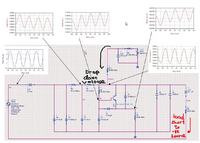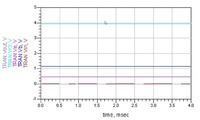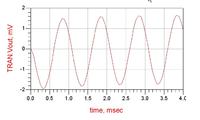spid3rx
Member level 2

Hi,
I come across a schematic on the microphone line, with a bjt which I believe is for audio signal amplification. I believe it is a common emitter type with Re=56 ohm. The thing is I don't understand why there is a capacitor with 39pF in between base and emitter, and another one 1000pF cap between collector and emitter? Anyone can explain the usage ?
39 pF with the 56ohm on emitter line as high pass filter ?
no idea on 1000pf ?
please help anyone knows. million thanks !
I come across a schematic on the microphone line, with a bjt which I believe is for audio signal amplification. I believe it is a common emitter type with Re=56 ohm. The thing is I don't understand why there is a capacitor with 39pF in between base and emitter, and another one 1000pF cap between collector and emitter? Anyone can explain the usage ?
39 pF with the 56ohm on emitter line as high pass filter ?
no idea on 1000pf ?
please help anyone knows. million thanks !






